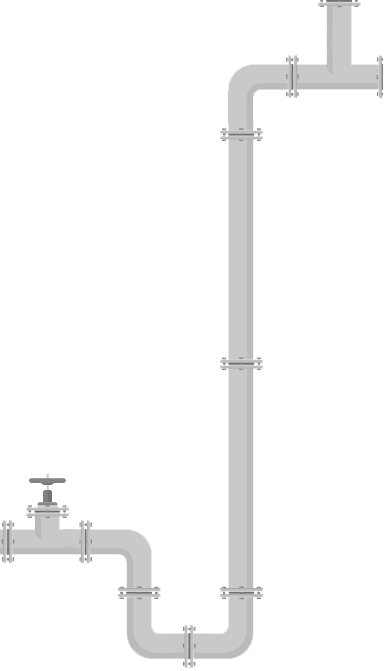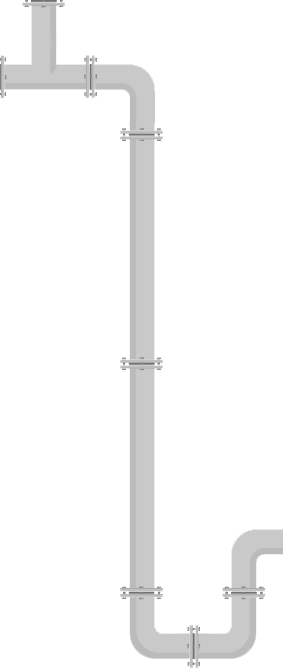What to Do in a Plumbing Emergency
Posted by Jason Genah on 07-05-2025

A burst pipe, overflowing toilet, clogged sink, low or zero water pressure; these plumbing emergencies have one thing in common: they can easily derail anyone’s day and cost hundreds if not thousands of dollars to repair. However, their real threat is not inconvenience; it’s lasting damage.
Many plumbing emergencies result in extensive damage simply due to inaction. Detecting a plumbing emergency can take seconds or months, depending on the situation. A flooding toilet or clogged drain will be noticeable instantly, but a damaged pipe will not really show up until your utility bills increase.
The time it takes between detection and when a plumber arrives to repair the issue is crucial. Knowing what to do while waiting for your plumber to arrive can also help to lessen the toll taken on your property.
When you purchased your dream home, you may have been shown the location of the water shut-off valve at the time of the inspection. It’s a great practice to remind yourself where the main valve is every year or so. This way, in the case of an emergency, you can act quickly and shut off the water to reduce the damage.
Don’t be caught unprepared in a plumbing emergency. The faster you act to contain the problem and call a 24/7 emergency plumbing service, the sooner it is repaired, and costly damage is prevented.
What counts as a plumbing emergency?
There are many types of plumbing damage, but is every single one an emergency? While any plumbing issue needs to be repaired as soon as possible, a particularly pressing one requires calling a 24/7 emergency plumbing service in Toronto. Making this call might prevent costly and dangerous water damage.
So, consider if you need to call a plumber in the middle of the night or on a weekend. Does a minor faucet leak count, or only flooding caused by a burst pipe? In fact, you should call a 24/7 emergency plumber when any of the following disasters strike:
Flooding
We have all seen those exaggerated insurance commercials where someone is sitting on the sofa and the ceiling collapses with someone in the bathtub. You may have even laughed at this seemingly impossible situation.
Sadly, a collapsing ceiling can happen if the bathroom is flooded. You may also end up with water flowing down to the lower floors and even reaching the basement.
Regular maintenance and servicing of pipes, sump pumps, and drains can reduce the chances of flooding. However, if flooding does occur, shut off the main water supply and call an emergency plumber in Toronto immediately. Take pictures for the insurance company, and if possible, try to clean up some of the water to prevent mould growth.
Burst or Leaking Pipes
Damaged or incorrectly installed pipes can lead to issues in the long term. Additionally, burst or leaking pipes can cause various flooding problems.
If left for too long, the water will cause structural issues within a home. The drywall will begin to soften, and wooden frames will soak up the water. This will not only weaken the structural integrity of the room but can also become a breeding ground for mould spores, which will lead to health problems.
Time is of the essence in such cases, so calling a residential plumbing company quickly while shutting off the water and grabbing towels or buckets will be crucial in getting the help you need while preventing further damage to the home.
Frozen Pipes
Toronto residents are no strangers to sub-zero winter temperatures. However, if you think you’re completely safe from the cold while indoors, think again. The harsh cold affects your living space more than you may realize.
Frozen pipes are one of the most common plumbing emergencies in the winter. Pipes freeze as a result of the water flowing through them hitting below-zero temperatures. This process is often made worse by a lack of winterization.
Ice exerts mounting pressure on the pipe walls, causing them to expand and eventually burst. Additionally, because there is no water running through the pipes, you won’t be able to flush the toilet or wash the dishes.
When this happens, don’t try to thaw the pipes yourself. Many DIY attempts only result in further damage. Instead, call a plumber at the first sign of frozen pipes.
An Overflowing Toilet
Toilets can clog for many reasons, but most tend to involve organic matter. The U-bend in the plumbing doesn’t always allow for lots of material to go down at once, and then there are the items that should not go down the toilet, but be disposed of in the garbage instead.
While a clogged and overflowing toilet is embarrassing, there are potential health risks involved. Due to the nature of the material in the bowl, harmful bacteria that can cause illness may escape into the flowing water and multiply. Mould can flourish in damp and dirty environments as well.
In such instances, shutting off the water, grabbing gloves and a mop and bucket quickly, all while contacting plumbing services, will reduce health risk exposure as well as damage to the bathroom.
Clogged Drains
The drains work 24/7 to flush waste out of your home, but over time, they’re no match for items that don’t belong there. Rather than flow into the sewer lines, pesky waste products like grease, food scraps, paper towels, sanitary products, and grime can build up in the drains and block the flow of wastewater.
Eventually, these clogs can worsen and prevent any drainage at all, resulting in standing or pooling water. If this happens, book an emergency plumbing service immediately. Don’t wait for the blockage to worsen and cause indoor flooding.
Emergency Plumbing Basics
Now that you know what a real plumbing emergency looks like, it’s also important to remember some basic tips to follow while waiting for your plumber.
Following these simple steps will help minimize damage to your property and even cut down the repair time. Just remember, though, these tips aren’t DIY hacks—you certainly still need to book a 24/7 emergency plumbing service:
Locate the Main Water Shut-off Valve
You probably have not thought about this valve since the day you had the home inspection prior to purchasing it. However, this little valve is what stands between you and extensive, expensive damage during a plumbing emergency.
The location of the valve may vary from one home to another, so it’s a good idea to track yours down. It can often be found where the water enters the home, including in the basement or a crawl space, for example. It can also be located just outside the home or beside the water meter.
Make sure to maintain the shut-off valve following your plumber’s advice regularly. The valve should be checked for rust and general functionality.
Handling Minor Leaks
A minor leak, while irritating, can be easily fixed, preventing it from becoming a major problem. If a leak becomes a major issue, then the best thing to do is to call a plumber and try to prevent water flooding.
For a minor irritation, such as a slow drip or trickle of water, check to see where the water is coming from. If it’s from a joint, then try to tighten it if it is just a case of loosening over time. If you have plumber’s tape, then you can wrap this around the leak’s origin, and it will certainly give you more time to address it.
If you don’t have plumber’s tape, then wrapping a cloth and securing it with duct tape can also work as a very temporary measure. Either way, calling an emergency plumber in Toronto will prevent the issue from turning into a serious problem.
Preventing Further Damage
There are many things you can do while you wait for help to arrive, and starting these things early will help reduce damage to your property.
First, make sure that the water stops completely. Not only will this prevent structural damage, but it will also prevent the water from getting too close to electrical sockets, which can cause shorts and even more pressing issues. Turn the water off at the valve as quickly as possible.
Turn on any external taps you have around the home; this will help to drain the water away from your residence quickly. Move furniture, rugs, and anything lying on the floor to prevent water damage. For larger items, compile piles of towels, sandbags, and other similar items to stop water from getting too close or into the furniture.
To learn more about plumbing emergencies and what you can do to prevent further damage, call Drain King Plumbers’ 24/7 emergency plumbing service in Toronto at 833-983-5663, or contact us here.




